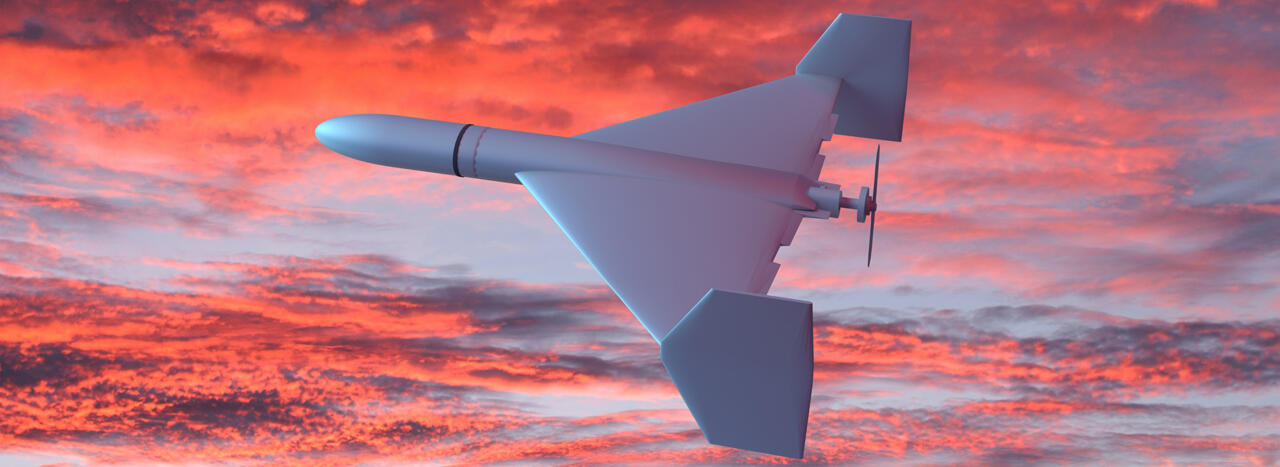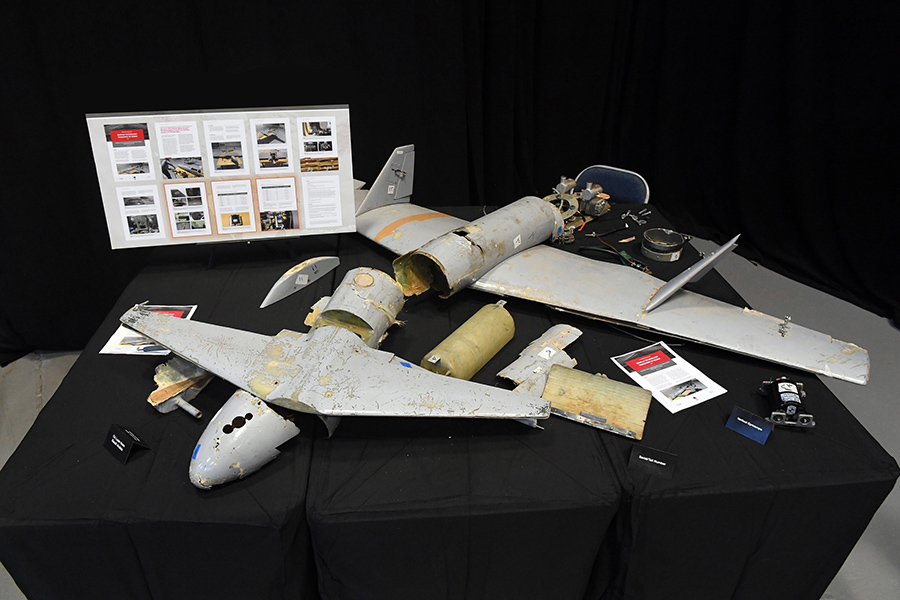
The impact of drone attacks in the Russia-Ukraine war has made the protection of military vehicles an urgent priority not only for Ukraine but also for the armed forces of the United States. A current CTMA project has created and successfully demonstrated a capability that protects vehicles from attacking unmanned aircraft systems (UASs).
The Multi-Threat Radar Installation & Characterization (MTRIC) project is a collaboration between industry partner DRS RADA Technologies a subsidiary of Leonardo DRS and several US Army organizations: Combat Capabilities Development Command; Program Executive Office Ground Combat Systems; Ground Vehicle Systems Center (GVSC); Ground Vehicle Survivability & Protection (GVSP); and Command, Control, Computers, Communications, Cyber, Intelligence, Surveillance, and Reconnaissance (C5ISR).
The project team is collaborating to protect service members from drone attacks, which emerged as a significant threat even before the Russia-Ukraine war.
“In 2020, during the Nagorno-Karabakh war, the world saw new uses of drones to attack not only combat vehicles, but also logistics vehicles, troop transports, and individuals,” said Joe Mollo, Director of Advanced Programs, DRS RADA Technologies. “We recognized that high-value vehicles like a Bradley or Abrams have an active protection system or armor to protect them from attacks, and combat units have short-range air defense (SHORAD). But everyone else on the battlefield needs protection from drone attacks.”
This project designed a system for vehicles that alerts the operator if they’re about to be attacked.
“This system looks at the behavior of the drone that’s in the area and based on its altitude, its speed, and all the kinematics, the system uses Artificial Intelligence models to determine whether the drone is a threat. If so, it alerts the operator of the vehicle,” said Mollo.
The system consists of a continuous 360° sensing capability that is easily integrated with multiple combat support vehicles via a B-kit, integration hardware (A-kit), prototype threat interception capabilities, and softwarethat supports autonomous/semi-autonomous operation to reduce the workload, training, and maintenance activities for the vehicle crew.
“The system is a roof rack kit that can be put on any vehicle,” said Mollo. “We created a B-kit concept consisting of short-range radars, a small processor assembly, and user interface that alerts occupants to help the survivability of the crew.”
The A-kit was designed in collaboration by the team at DRS RADA Technologies and by a team from the Keweenaw Research Center, then built by Keweenaw Research Center. The system is platform-agnostic, so it can be used for many different types of vehicles and even watercraft.
“It’s a self-contained frame that has four small radars hard mounted to the platform,” said Chris Burgy, MTRIC Program Manager, DRS RADA Technologies. “Vehicles or aircraft would just have to have the A-kit installed. For the demonstration, we installed the kit on an Infantry Squad Vehicle (ISV). The kit successfully provides real-time situational awareness for that truck, whether it’s driving or stopped. The system will survey everything flying and classify whether it’s a drone or a nuisance target and only alert if it’s a drone and it is threatening the vehicle.”
The radars are state-of-the-art, small, multi-mission, high-performance active electronically scanned array (AESA) radars.

“The RADA AESA radars are software defined and operate based on a set of parameters that you plug into the radar,” said Burgy. “Operators can create what we call mode files, which are pre-planned mission sets that enable users to specify whether they want to focus on drones that are far into the distance, close to the horizon, at the whole air picture, or very close to the vehicle. For the test we conducted in this project, the Army was very concerned about drones coming directly overhead, so that was the mode file that was made for them. The radars can detect out to 6-7 kilometers to see a Group 1 drone-sized target.”
The system also integrates an Artificial Intelligence program developed by DRS RADA Technologies.
“Our AI program looks at how the drone is behaving and assigns a threat value to it between 1 and 4, with 4 being the greatest threat,” said Burgy.
The team partnered with GVSC to demonstrate the system at Camp Grayling in Michigan.
“We had a very successful two-week test,” said Burgy. “Our team worked well with the GVSC and Camp Grayling teams. The Army has been very proactive, and this was a great opportunity for us to get involved with the Michigan ecosystem to create a commercial-off-the-shelf product.”
The DRS RADA Technologies team has also partnered with the Navy to install the system on an asset.
“It’s been installed on an unmanned system that senses threats far away from the main fleet, to prevent the main fleet from having to respond,” said Mollo.
The system can also be combined with other capabilities.
“This system could easily be paired with an optic to see if drones are carrying ordnance,” said Mollo. “Also, an effector could be installed with a protective device for a vehicle such as a gun, a missile, or an electronic countermeasure.”
With the growing threat from drones, there will be a strong need for vehicle protection going forward.
“With what we’ve seen in Ukraine, drones are becoming much more lethal, and the threat is not going to go away,” said Mollo. “There is a growing need for this type of mobile, adaptable system to protect vehicles and save U.S. lives.”




